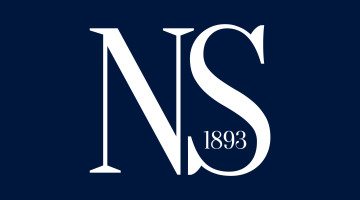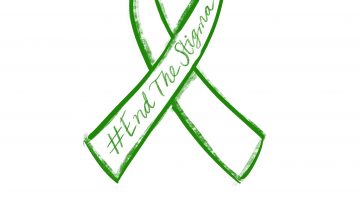
Isaac Hoops/Nevada Sagebrush
The John and Geraldine Lilley Museum of Art presents their 2021 exhibit.
Immigrants on the borders have to walk through an arid landscape, fighting the desire of thirst that dries in their throats as they push themselves to just take a few more steps, only to find they walked right into an unwelcoming new home.
These are the cultural realities the “EN MEDIO Senses of Migration” exhibition depicts to its audience through the form of art.

Isaac Hoops/Nevada Sagebrush
EN MEDIO | Senses of Migration exhibit opens to the public in July 2021.
After the John and Geraldine Lilley Museum of Art at the University of Nevada, Reno opened one year before the pandemic, the museum has made its way through to present art and culture in the current exhibit “EN MEDIO | Senses of Migrations.”
The idea based on the promotion of the exhibit is to raise awareness to the migration violence occurring on the US border. “EN MEDIO” will remain open until Jan. 15, 2022.
Vivian Zavataro, director and chief curator of the Lilley Museum, explained that she has been working on this exhibition’s concept for a few years now.
It all started with one conversation.
Zavataro told The Sagebrush about the exhibition originating from a conversation that the director had with the artist Guillermo Galindo at the last edition of documenta.
Zavataro had explained that Brett Van Hoesen, one of her professors during her bachelor’s degree in art history at the University of Nevada, Reno, had “opened [her] horizons” during her last year and introduced her to documenta, an exhibition that has happened every 5 years since World War II in Kassel, Germany.
When Zavataro explained the details of her conversation with Galindo, she emphasized that this conversation led to discussions about the work from Galindo’s own collaborative series “Border Cantos” with Richard Misrach.
“The instruments created … are made with small—and sometimes really big—things found on the US/Mexico border,” she explained, describing the “Border Cantos” project, to give people an idea of how this real, raw information inspired her to build with this concept.
From there, the idea of this exhibition theme was formed, co-curated by Vivian Zavataro and Jeannette Martinez. Zavataro even mentioned that Galindo’s pieces are right there when you enter.

Isaac Hoops/Nevada Sagebrush
The entrance of the EN MEDIO exhibit in the Lilley Museum.
“His work really touched me … including pieces that make you think deeply about humanitarian issues, and much more,” she said.
On Aug. 25, the exhibition had a participatory aspect, where The Lilley partnered with the Department of Gender, Race & Identity to bring “Hostile Terrain 94.” The project is a participatory exhibition created by the Undocumented Migration Project. The UMP is a non-profit organization which focuses on the violence in immigration and raises awareness to the issues with outreach ideas, research plans, and education on the topic.
Essentially, the exhibit is composed of a bit less than 3,400 handwritten toe tags which are geolocated on the map of the Arizona and Mexico border.
“These tags are … showing the exact locations where human remains were found,” Zavataro said. The tags represent migrants who died trying to cross the Sonoran Desert in recent years.
The Undocumented Migration project’s intention with this exhibition is to raise awareness and engage with people around the world on the subject of humanity crises occurring on the US/Mexico border, as well as on migration as a whole.
Zavataro gave The Sagebrush the background of where the “Hostile Terrain 94” exhibition comes from. When the United States Border Patrol put forward the immigration enforcement known as “Prevention Through Deterrence” in 1994, undocumented migrants were forced to travel through dangerous environments, like the “Hostile Terrain.” When over six million people attempted to migrate through the Sonoran Desert, the United States attempted to blame the environment for the deaths of all the migrants travelling. The toe tags are used to represent all the lives lost from this migration.

Isaac Hoops/Nevada Sagebrush
The Lilley’s exhibit shows beautiful pieces of the EN MEDIO exhibit that portrays the stories of the border crossings.
According to Zavataro, the Undocumented Migration project believes that policies like PTD have formed groups including thousands of traumatized people due to immigration control.
Zavataro believes that exhibitions like “Hostile Terrain 94” and “EN MEDIO” can help people become more aware of what’s really happening at the border.
During all events related to the exhibit and regular museum hours, The Lilley continues to follow the university’s regulations, according to Zavataro. Masks are required for entry regardless of vaccination status, and they will continue to encourage everyone to get vaccinated.
When asked about the exhibition’s pieces, Zavataro explained that it was hard to choose one of her favorites because she and Martinez had carefully selected all the pieces, However, she does recommend Rafael Blanco’s ”Yascara, Dreamer.”
Blanco’s piece is accompanied by an audio of her travels crossing the US/Mexico border into a new country, undocumented. “The painting is one of those works that reframes your own reality … it is an invitation to see the world through another’s eyes,” Zavataro said.
The overall point of an exhibition like this is to open students’ eyes to the world around them. The director explains that this exhibition will help students to learn more about the harsh reality of what happens on the United States-Mexico border.
“The goal is to have students asking questions, to make them curious about issues they are normally exposed to on a superficial level, to entice them to dig deeper,” Zavataro stated.
Zavataro wishes to invite visitors to think about the subject in a different way and to understand what’s going on with immigration rather than judge. The theme in this exhibition is obviously hostile and controversial, with multiple sides in disagreement, but it is not here to cause disagreement. It is here to open your eyes to the perspective of someone else.

Isaac Hoops/Nevada Sagebrush
Images in the current Lilley exhibit depict the stories of immigrants’ journeys.
Raising awareness with exhibitions like “EN MEDIO” is a powerful move for Zavataro to bring about as director. She metaphorically compares the adventure of directing the brand-new museum and curating exhibitions like this to it feeling like “having a white canvas to paint on.”
When asked what final advice she would give to art students, Zavataro said, “Be active! If you are an artist, create, create every single day, even if it’s a small piece.”
The exhibition will be available for free access to the public until Jan. 15, so during your free time, stop by the Lilley Museum to enjoy this exhibition and really step out of the box to see what it’s like on the outside.
Jaedyn Young can be reached at jaedynyoung@sagebrush.unr.edu or on Twitter @xox_jaedyn.











